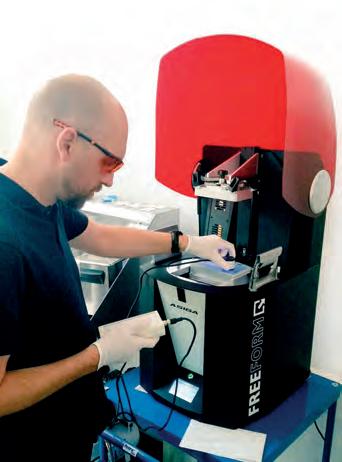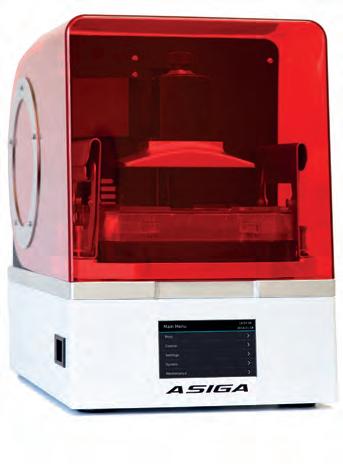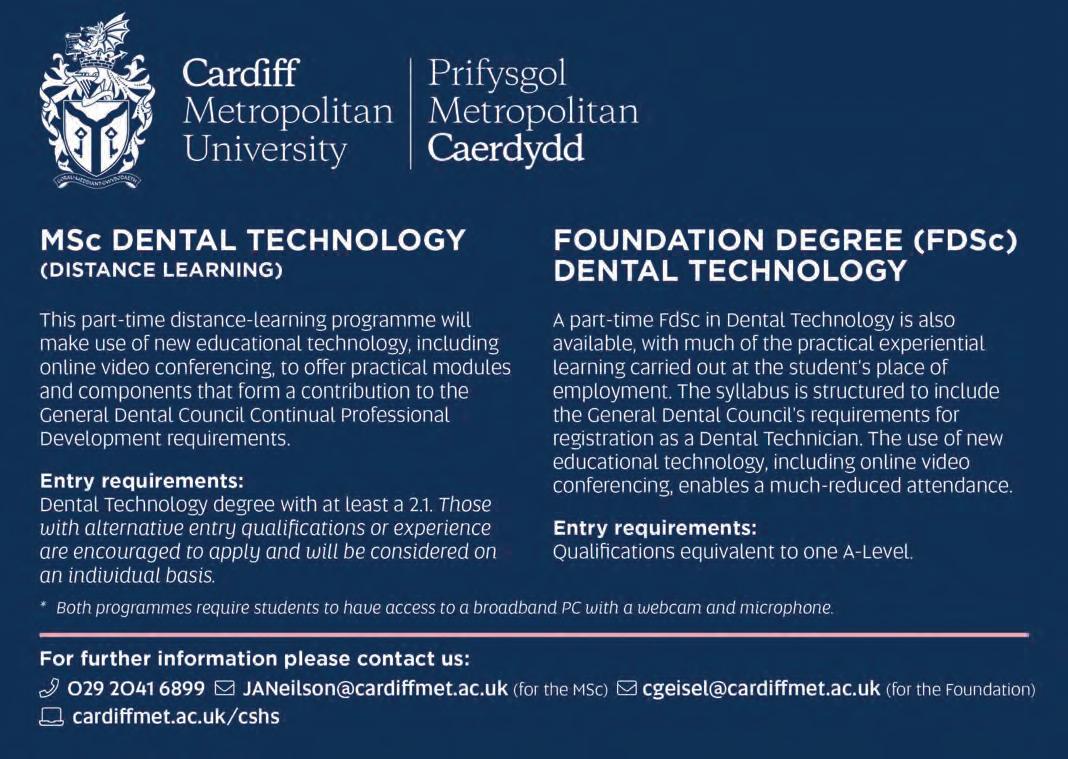
5 minute read
An interview with... Mark Welch, RDT/Digital expert at Bracon
AN INTERVIEW WITH... MARK WELCH
RDT/Digital expert at Bracon
Advertisement
How did your career in dentistry start? I found an advert in the local newspaper for a model maker and delivery driver at a local dental laboratory.
After working there for a short time, I was told about a job going in London. I arranged an interview and remember walking up Harley Street and thinking "wow what an incredible place to come and work!" the rest is history!
Give us an interesting fact about you? I won the boys 400m in athletics for my secondary school at the Sussex championships.
Do you have any interests or hobbies? Dentistry, particularly digital of course! But my number one interest is music and I have been a DJ for some time. I have been collecting music since I was 8 years old. I also enjoy playing video games in my free time as a source of relaxation.
What is your favourite part about your current role? I have always been a bit of a techno geek, always having had a fascination with technology and having played video games since I was a child, so naturally digital dental technology is a great role for me. I'm very lucky as in my current role as I to get to play with all the latest digital technology hardware and software in dentistry. My passion lies especially with 3D printing and additive manufacturing, also the immense pleasure I get from training and supporting our digital customers at Bracon Ltd.
Where do you think digital dentistry is heading in the future? In the last couple of years there have been some manufacturers working on the creation of additive manufacturing systems for manufacturing zirconia and ceramics. I personally think there are huge benefits to be had from additive manufacturing. These may include increased accuracy, faster build times and much less waste of materials. These systems may be expensive when they first enter the market but after time the prices will come down to a point where laboratories will be able to afford them.


What are some of the new applications to look out for in the future of 3D printing? We are still waiting for the next generation of denture base materials and these will see improvements in materials for long term appliances. The next big thing to cause a shake-up will be direct printing of aligners, watch this space....
What has been the most innovative technology that you have seen to date for digital printing and milling? There has been some research into Holographic 3D printers as of late, it looks like something from a 70’s Sci-fi movie!
Looking ahead at new technologies do you think that holographic printers will be the next revolution in additive manufacturing? I think there may be some useful uses for these including laser printers, especially when printing metals as they could help the distribution of power in 3 dimensions instead of two. Reading up on this, the theory is that the power output can be monitored much more efficiently thus producing much stronger parts.
For the sake of our readers, can you explain the differences between LCD printers and DLP Printers and which type do you think will be more popular in the future and why? The difference from my experience is that DLP printers can be highly accurate and reliable, they also print at a faster rate. The downside is that they can be expensive to repair and this will usually need to be undertaken by a qualified engineer. DLP printers can also have significant consumable costs.
LCD printers are capable of high accuracy but are cheaper to purchase and easier to repair. The consumable costs may be less, but the LCD panels themselves will need to be replaced from time to time to maintain accuracy.
Historically they are slower as they use a less powerful light source thus taking longer to cure each layer, although I believe the new generation are now able to print faster. I think that both types of light sources will continue to improve in the future and may get to a point where there is not much difference between the cost, quality of printed parts and variety of materials that can be used.
How do you see intraoral scanners changing the digital workflows for the Clinicians and Dental Laboratories? Now that the pricing of intraoral scanners has dropped significantly and an IOS with a hi specification laptop can be purchased with all the scanning software for just under 10K, adoption of IOS devices will increase significantly. Already we are seeing a significant increase in enquiries from dentists and laboratories, which will eventually lead to these optical devices becoming standard pieces of equipment in every dental practice, much like digital radiographic equipment. This is already changing the workflows in those Dental Laboratories that can accept and process digital scan files.

Take your milling to the next level...
• The Aidite AMD-500, fi ve-axis, dry milling machine • Perfect for dental laboratories • Enables 90° vertical milling of buccal & labial surfaces • Latest design, half open C-shaped fi xture, increases the number of units that can be milled from a disc • Large, easy to use HD touchscreen • Reliable precision and surprisingly aff ordable • Exclusive July Off er: Finance options available from just £21.36 per day* • Time-saving disc changer version also available for 24/7 production
* Finance example just £469.90 per month for 5 years, includes lifetime software licence and VAT. Subject to status.


BRACON

Digital Dental Products
For more information, contact Bracon today!
t: 01580 817000 e: sales@bracon.co.uk w: bracon.co.uk










